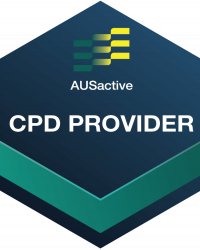Reformer Repertoire
Leg Work:
Side Splits
Alternate Names
Standing Abduction
Derived From
Classical Reformer: Side Splits
Primary Element
Mobility
Why for Primary?
To develop and improve mobility at the hip joint.
Secondary Element
Stability
Why for Secondary?
To develop and improve hip abductor strength, namely the gluteus medius and minimus as the carriage is pressing away.
Tertiary Element
Strength
Why Tertiary?
To develop and improve hip abductor strength, namely the gluteus medius and minimus as the carriage is pressing away.
Repetitions
8-10 each side
Apparatus Setup
Suggested springs
- Number system: 1 spring
- Colour system: 1 x red spring
- Resistance: light to medium
Foot bar at the lowest position or horizontal position. If a foot plate extender is available that can be used to create more space to place the foot, otherwise ensure the foot plate itself is free from trip hazards such as the foot strap.
A pole may be used for balance if required.
Plane of Motion
Frontal
Targeted Muscles
To create, develop and connect with the pelvis stabilisation muscles the focus is gluteus medius and gluteus minimus and the deep abdominal muscles transversus abdominis.
To strengthen gluteal muscles in abduction the focus is gluteus medius and gluteus minimus.
Warnings
This exercise may be difficult for clients who struggle with balance or who may be nervous standing on a moving platform. Use a pole to assist with balance if required, or alternatives could be to practice a similar movement lying on a Mat such as Side Kick Series: Single Side Leg Lift.
It may also be unsuitable for clients with some hip, knee or ankle issues or if the client is unable to work through a pain free range of motion.
Execution
Standing facing the foot bar end of the Reformer step one foot up onto the foot place (or foot plate extender), before stepping the second foot up onto the carriage. Adjust both feet to the edges of the platforms and lift the arches of the feet. Hold the arms to a T-position.
Exhale to abduct the hips, opening the legs and allowing the carriage to move out. Pause at the end of range of motion, then inhale to adduct the hips, bringing the legs in towards each other and the carriage back to the start position. Pause before the next repetition to avoid using momentum and riding the springs.
Observations
Do a body scan of the client taking note of the following points
- Pelvis
- Are the hip bones even horizontally or is the client leaning to one side?
- Is the client neutral with their pelvis, with a posterior tilt?
- Legs
- Is the top leg knee locked? You’re looking for a soft and straight knee, not dropping inwards and not locked. Have the client reach the knee up slightly to connect more into gluteal stability muscles
- Is the client able to keep the top leg at hip height or higher? Keep the leg lifted to avoid engaging the hip adductor muscles
- Feet
- Are the insides of the foot lifting or leaning outward? (supinated)
- Are the insides of the foot rolling inward? (pronated)
- Apparatus
- Is there tension on the springs the whole time? Or is the carriage crashing to the stopper or ‘park’ indicating a lack of control and a push by the client beyond their ideal range of motion? If the carriage is crashing encourage the client to reduce their range of motion and slow their movement down to focus on controlling the return phase, or reduce the spring load so the client can control the spring.
Learning Style Technique Cues
Auditory – word associations that connect mind and body
- The aim is to keep the pelvis still whilst the legs are moving
- Say the client’s name when you’re about to interact with them
- Bias the pelvis towards a slight posterior tilt in order that you can achieve neutral whilst moving
Visual
- Imagine a wine bottle opener or a puppet on a piece of string moving and maintaining length through the torso
- You may demonstrate a part of the movement as a visual representation for the client to see
Kinaesthetic
- Feel the shoulders relax and choose an arm position that allows for that including hands on the hips as an alternative to the T-position
- Press from the outer hips or gluteals and try to feel the resistance on the return phase also. If there’s no resistance and work in outer gluteals on the return phase the spring setting may be too light
Modifications and Variations
Regress the exercise by
- Reducing the spring resistance to one blue spring to connect more into the stability component of the exercise and reduce the leg load on the pressing leg. The client may need a pole or prop for balance to assist if the spring becomes too light
- Turning the foot of the foot plate leg out so there is more surface area to stand on
- Reducing the repetitions and/or pace
- Working on Reformer Side Kick Series: Drop and Catch as there is still abduction at the hips but in a more supported position without as much balance work involved
- Adding the Pilates box in ‘short box’ position and position the carriage foot against it for support
Progress the exercise by
- Iincreasing the spring setting to one red and one blue spring, adding pace and repetitions. Use the ‘short box’ as noted above for support and to stop the carriage foot sliding
- Add light (1kg – 2kg) hand weights to challenge shoulder stability and build shoulder strength
- Bending the knees into a squat position throughout to engage quadriceps and maintain the abduction at the gluteals
- Progress into Leg Work: Side Splits – Adductors
- Working towards Wunda Chair: Single Leg Press Crossover and Wunda Chair: Going Up Side
Series and Transitions
This exercise is part of the Leg Work Abduction and Adduction series which includes a range of other exercises in the fundamental and progressive repertoire. The Leg Work series can also be found in the Wunda Chair repertoire and the Cadillac repertoire.
Transition to the Leg Work: Side Splits – Addutors (progressive repertoire) by reducing the spring setting to one blue spring and continuing with the side split movement.

